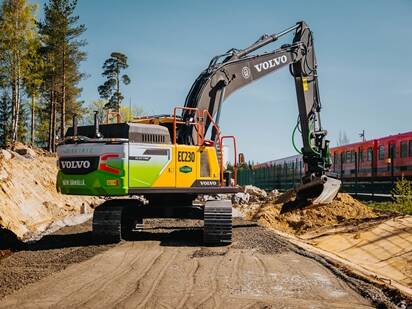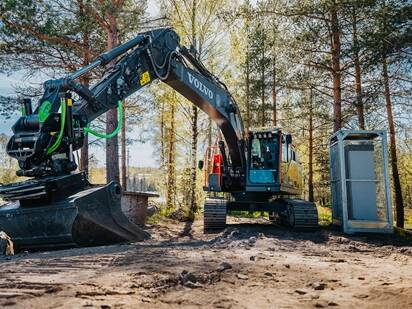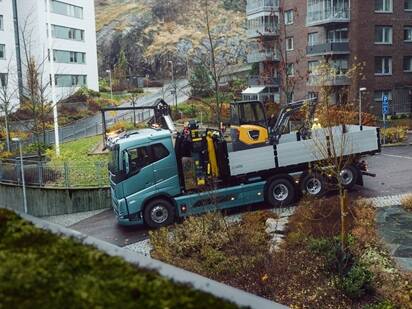
Reliable infrastructure supported by electric construction
Roads and other infrastructure are traditionally large emitters of carbon, not only in their construction but also in their day-to-day use. This makes it a challenging sector to decarbonize, but also one that offers the greatest possibilities to take sustainable action.
It is so important to have a safe, reliable and efficient network of roads, bridges, railways and airports – a network that keeps people and goods moving, especially as we become ever more global and interconnected. But as we look towards a more sustainable future, it is essential to build these civil engineering projects with a lighter carbon footprint. Low carbon technologies, like electromobility, as well as sustainable materials, are key to making this happen. For the building, delivery and maintenance of these roads and infrastructure, electric construction equipment holds the answer.
Construction work on roads, such as site preparation, earthmoving, compacting, paving and finishing, can all benefit from the zero exhaust emissions and near silence provided by electric construction machines. Maintenance applications such as road clearing, motorway inspection, shoulder improvements and reinforcements all benefit too – ensuring a more pleasant environment for those working or passing nearby. And it is not just roads: so too the construction of heavier infrastructure, such as building bridges, railways, dams, waterways, harbours, tunnels and pipe laying.
The huge variety of tasks in this civil engineering segment also means an entire fleet of different construction equipment is often needed – from small compact machines through to general purpose excavators, wheel loaders and haulers. The industry now provides a versatile range of exhaust emission free solutions to keep our roads and thoroughfares moving: a network powerful and sustainable enough to maintain the infrastructure needs for today and tomorrow.

Our electric construction equipment





























